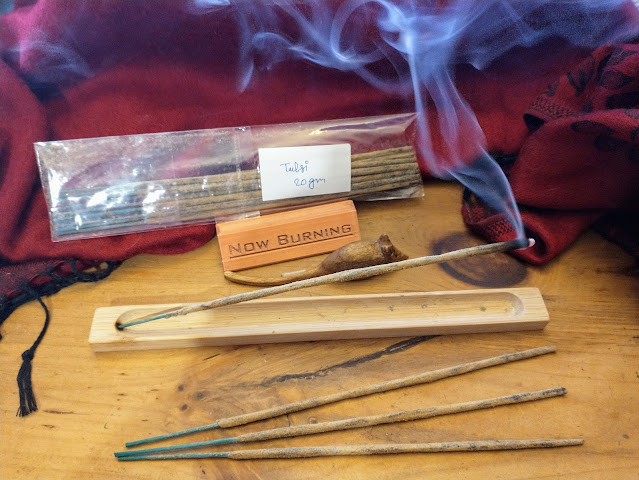It is possible that this is the same stick sold by Gokula as Gokula Connoisseur Tulsi Vrinda. but is also possible that it is not. I certainly am enjoying this a little more than I enjoyed the Gokula, and that could be for a number of reasons - these sticks are fresher, I'm reviewing them in the summer rather than the winter, I'm in more receptive or happier mood, there is a batch variation, or they are made to a different recipe in a different part of the country. Whatever, they are part of the bigger picture of Indian incense being made in an artisan manner, and then rolled out in humble homes by hard working women. It's a complex picture, part romantic, and part concerning. But at the end of the story we come to the burning of the incense. This incense isn't developed for Western homes, it is cheap as chips (cheaper actually) incense made for Indian people living in or visiting the holy city of Vrindavan in the north east of India. Yes, it's a little smoky and simple, but it is also earthy and vibrant. The scent on the stick is fresh, sweet, green, herbaceous, with a touch of wood. The burn scent is not as attractive, but that is quite common and acceptable. Yes, this is nice, simple, basic, everyday Indian masala incense.
Available at £1.02 for 20gm from Vrindavan Bazaar. They ship internationally at reasonable rates.
































